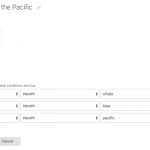Google’s cell-pleasant update: is your website online UX prepared?
for those who’re in any respect involved within the online space, that is pretty extreme. On 21 April, Google will launch a brand new cell-pleasant algorithm with a view to reward internet sites that are fully optimised for cell with better rankings in search outcomes.
The update goals to make Google even more useful to individuals with the aid of training its bots to look more like people. Outlawing textual content that’s too small to learn, hyperlinks that are too close collectively to tap, and device individual to mobiles like Flash, amongst different factors, all of it comes right down to improving the general consumer expertise (UX).
That’s nice for on a regular basis users, however how giant a hit will website online homeowners turn out taking?
“businesses that optimise their sites for mobile with fast-to-load, properly-displayed architecture will seize more consideration, clicks and sales,” says Jana McMaster-Wepener UX knowledgeable at digital advertising and marketing company Shapeshift. “however, it’s not just about improving your design – you also wish to strategically look at whether or not your structure is intuitive to navigate and can make it straightforward for users to finish a job.”
“earlier than you begin changing your web site to mobile, are you certain that your current website online meets the UX wants of your shoppers?” she asks.
“Even giant corporations don’t always take note exactly who their online customers are, how they’re eating data and the way content material must be delivered subsequently,” says McMaster-Wepener. “earlier than companies spend their cash on constructing responsive web sites, dedicated cellular websites or cell apps, they will have to start with the person and establish whether they answer their UX desires. Or, your funding in cell isn’t truly going to improve gross sales.”
In a crawl of 300 JSE-listed firm internet sites the use of Google’s mobile-pleasant take a look at, Shapeshift has found that only 34% of web sites handed the take a look at. numerous web pages from the just about 400 listed corporations may now not even be discovered via Google’s search bots. compared to fifty six% of Fortune 500 companies passing the identical take a look at, South Africa’s figure is slightly low, says McMaster-Wepener.
“cell-friendliness is set giving customers the expertise they truly want,” she says. “It’s no longer with regards to changing your current web page into a mobile structure.”
cell sites need to be optimised for knowledge on the go and could have less content, completely different navigation or different special UX requirements, she says. for instance, relying on the buyer’s surroundings, they may well be using a tablet or a smartphone with totally different sized monitors, struggle with patchy bandwidth that needs sooner-loading web sites, or be in a hurry that requires key knowledge to be simply available.
consistent with McMaster-Wepener, one way to create online experiences that evolve with the real-time needs of today’s customer is Design thinking. At its core, this contains:
- the invention segment: Defining the customer (who are the real customers, what do they suspect, feel, see, hear, say and do), finding a check topic and doing analysis into their atmosphere and what wants they have got that should be met.
- thought stage: Taking the research into a method section to brainstorm ideas and outline easy methods to build new options and content material that may meet these needs, redefining the ideas architecture and building a prototype with interactive wireframes.
- test, rinse, repeat and refine: checking out the prototype with customers and further refining it with their feedback, doing the design and testing it with customers once more, coding and deploying the web site with shut monitoring of utilization metrics for future enhancements.
“Some companies want more intensified responsive web sites than others,” says McMaster-Wepener. “In cases where the laptop website online holds various data and a responsive design isn’t the definitive answer, it’s possible you’ll desire a redirect to a dedicated cell website online with a unique menu and even design cellular apps, just like the banks are doing.”
in step with The mobile Africa 2015 learn about, on moderate, forty% of these surveyed in South Africa, Nigeria, Ghana, Kenya and Uganda, use their cellphones to browse the web. With South Africa leading the cost with 34% app downloads and forty one% of speedy messaging, use a mobile-pleasant web page will turn into increasingly more important, she says.
McMaster-Wepener says there are methods for companies to begin at any point of the method: “You don’t must lay our a fortune instantly. just right strategic thinking could make your present UX much more effective and stretch your finances further.”
AKPC_IDS += “120191,”;
perform swapImages()
var $lively = $(‘#adGallery .active’);
var $next = ($(‘#adGallery .lively’).next().size > 0) ? $(‘#adGallery .energetic’).subsequent() : $(‘#adGallery div:first’);
$lively.fadeOut(operate()
$active.removeClass(‘energetic’);
$subsequent.fadeIn().addClass(‘energetic’);
);
//create an editorial slideshow if there are associated articles
$(record).prepared(perform()
// Run our swapImages() perform each 12 secs
setInterval(‘swapImages()’, 12000);
);
(149)


 via
via 












